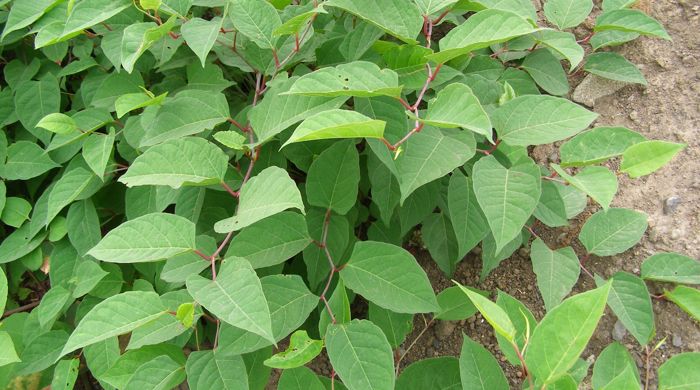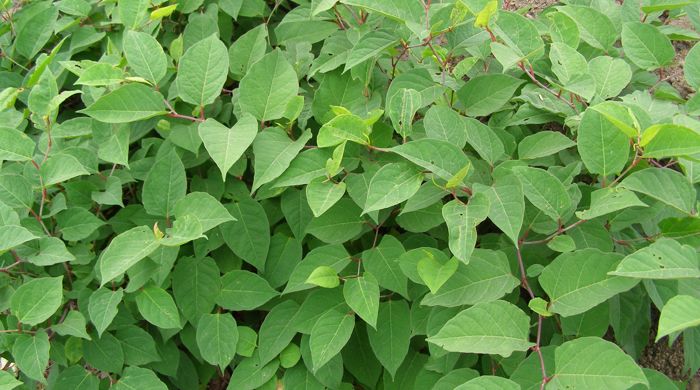Reynoutria japonica syn. Fallopia japonica, R. sachalinensis syn. F. sachalinensis and hybrids
Asiatic / Japanese knotweed
Also known as:
He shou wu, hu zhang
Family: Polyganaceae
Origin: Japan

Regional Pest Management Plan (RPMP) status
- National Pest Plant Accord Species
- Whole region — Progressive containment, council delivered
General description
Rhizomatous perennial herb < 3 m tall. Stems are reddish, branched and form dense thickets. Leaves are < 15 x 13 cm, bright green, broadly ovate, pointed and leathery, with an extra-floral nectary gland at petiole base. Flowers are small, off-white and borne in dense, drooping racemes <6cm long in summer – autumn. Fruits are glossy brown achenes.
What you need to know
To help protect our environment:
- You must not breed, distribute, release or sell Asiatic/Japanese knotweed. As Asiatic/Japanese knotweed is a National Pest Plant Accord species, these restrictions apply within the Auckland region and across the whole of New Zealand.
- You must not plant Asiatic/Japanese knotweed within the Auckland region.
Auckland Council will manage Asiatic/Japanese knotweed at all sites where it is known to occur.
If you see Asiatic/Japanese knotweed anywhere in the Auckland region, please report it to Auckland Council at pestfree@aucklandcouncil.govt.nz.
Habitats
Open areas, riparian areas, disturbed areas, roadsides, gardens, wasteland, forest margins.
Dispersal
Sets seed. Vegetative spread from rhizomes, dispersed by water. Human-mediated dispersal through soil movement.
Impact on environment
Forms dense thickets, excluding other species and preventing native seedling recruitment in riparian and forest margins.
Control
Recommended approaches
Do not attempt to undertake control of this species. Please report to Auckland Council.
Caution: When using any herbicide or pesticide please read the label thoroughly to ensure that all instructions and safety requirements are followed.





